Professional “Learners”
We were all professional “learners” at some point.
Think about it. Your “job” for the first 18 years or so was to learn. First to learn how to move and walk, and then how to learn in school. This may have continued in sports (learning more movement) or onto advanced degrees (learning more “school stuff”). I’m sure Doctors will be thrilled by my use of “school stuff” to characterize their advanced degrees… Anywho….
So we were all professional learners at some point. But what if I told you that most of how we were taught to learn was wrong, or at least, less than optimal?
Now before you go back to your 8th-grade algebra teacher, or the Coach who told you to try another sport, slow down and consider that learning is not a static science, but an evolving field. And since learning is a lifelong endeavor, we can always learn how to learn better.
How We Learn
In their book Make It Stick, the authors do a great job of laying out some of the new science and perspectives on learning. While the book mainly focuses on the “school stuff” type of learning, they do touch on the physical side. I would like to tie their “school stuff” together with a bit of motor learning information to provide a new perspective.
Nothing like small goals…
How were most of us taught to learn something?
Practice.
After all, it’s how you get to Carnegie Hall. (Old joke…Click HERE).
In physical learning, that meant hours of skill repetition: shooting hundreds of foul shots, tennis serves, golf drives, etc. In “school stuff” learning, (ok…I’ll switch to academic learning), it meant rote practice of reading and rereading, or writing and rewriting something you wanted to learn like the Gettysburg Address or multiplication tables. Well, it turns out that rote practice isn’t a great way to learn. Sure, it can work for a test. But “cramming” for a test is not the same as actually learning—as most of us can attest to since we can’t remember the Gettysburg Address.
It turns out the key to learning is…wait for it…
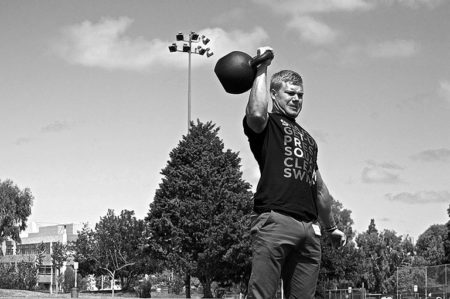
To struggle.
Students hate to struggle. Coaches and teachers—we hate to see them do it too. It doesn’t feel good. A lot of self-esteem and judgment (both internal and external) gets wrapped up in our learning. To be seen to struggle is tough. We quickly decide what to avoid based on our struggles. Not quickly “getting” math can lead to giving up on math. Missing foul shots can quickly lead to switching sports, etc. All prematurely before we’ve given ourselves any real chance. Since it’s the struggle that leads the way to learning and mastery.
In an academic learning environment, struggle means quizzing. Read (not to memorize but to understand). Take notes—a recent article in Scientific American points out writing out notes is superior to typing on a computer. Study and get quizzed on the information. Being “right” doesn’t matter. You read that correctly. Being “correct,” or the performance on the quiz is not important. What is important is the process of being quizzed, the struggle of recalling information and recognizing where additional study is needed.
Bean Bags and Practice
In a physical learning environment, struggle means allowing time for the skill to build (you can reread this article on Building Skill). It also means incorporating varied practice and interleaved practice into your physical learning.
In Chapter 3 of Make It Stick, the authors describe a study where children were asked to toss as many bean bags as possible into a bucket placed three-feet away. Split into two groups after a pre-test, the first group of children practiced throwing bean bags into a bucket three-feet away. The second group practiced throwing bean bags into buckets two-feet and four-feet away, but never three-feet away (the “goal distance”). Which group performed better at the post-test?
The second group out-performed the first. While never practicing the “goal” distance, they learned how to adjust effort and aim better than the group practicing the goal. This is a form of varied practice in physical learning.
I remember Pavel referencing Russian Shotput athletes throwing to specific distances. 12 feet, 8 feet, 15 feet (to be honest I have no idea how far shot putters put shots…but you get the idea) and rarely a “max effort” throw. Their dominance in the field shows they were onto something.
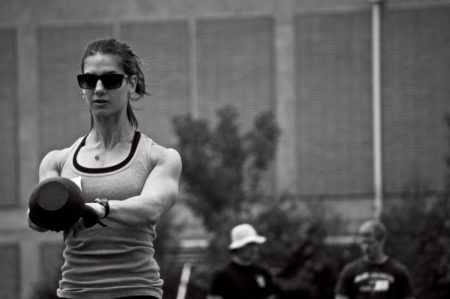
Varied practice can be vital for enhancing performance and building skill. Specific to kettlebell training this can mean something like weight ladders for swings, snatches, or any skill. Or performing swings or snatches at different percentages of effort/power (something the PUSH band can help you with).
Interleaving your practice means not spending hours on one skill but rather mixing in other skills (perhaps related to your goal). Practicing some swings between your military presses is one way to do it. Interleaving your practice doesn’t “feel” as good as spending an entire session on a skill—called block practice—where learning is “stored” in a more superficial way. With interleaving practice, your learning is stored in a deeper way.
When I teach our StrongFirst Kettlebell Course, there is an interleaving of the practice. Students learn the deadlift progressing to the two-arm swing, then we switch to the get-up.
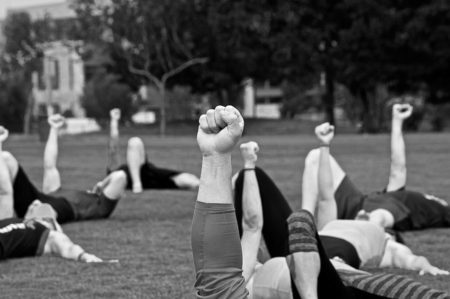
A key component of the get-up is learning what it means to have a connected (used to use the term “packed” but I think connected is better now) shoulder. After some get-up practice, we progress to the one-arm swing. A key component of the one-arm swing is having a connected shoulder—the students now understand what that means after the get-up instruction. Interleaving the practice enhances learning and can assist in incorporating complementary skills. In motor leaning this can be referred to as random (interleaved) vs. block practice (one skill).
Embrace the Struggle
“Struggle is nature’s way of strengthening it” (John Locke).
And since “Nature, to be commanded, must be obeyed” (Francis Bacon), you need to embrace struggle. Do not shy from it. Embrace learning that may not “feel good” at the moment. Implement varied practice and interleaved practice into your skill development.
Related Articles
The 3 Pillars: How to Build Skill While Being Real
Tweetable Quotes
Struggle is nature's way of strengthening it. – John Locke. Share on X Being 'correct' is not important. What is important is the process of being quizzed, the struggle of recalling information. – Brett Jones. Share on XResources Mentioned
StrongFirst Kettlebell Course
Push Band Wearable Technology
Make It Stick – book
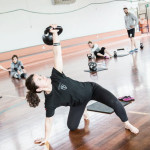
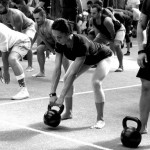
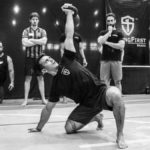
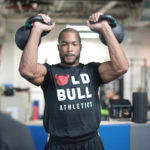




Anychance we have a strongfirst promo code for the PUSH band?
Kevin, there are two links in the article to purchase the PUSH band. I just checked them – they’re different but they do the same thing, which is offer you a 20% discount, saving you $60. Use either link in the body of the article or the link at the end.
If you have any problem, please let us know and we’ll do our best to help.
Thank you everyone
Nice Post. It’s a good thing to experience struggles in life and even failure. Those who are motivated will find a way to succeed.
Great article!
Yeah, I am a doctor and I totally agree with “school stuff” it’s not real. Struggle is the right way to learn for sure. I know my quantum chemistry much better than my organic chemistry because the teach made the quantum class a struggle – no matter how good you were, the quizzes kept getting harder.
Currently in the first half of medical school. “School stuff” is an entirely appropriate characterization…
Hey Brett,
Great post! I am just wondering how the above can be applied to S&S, where you work with the same weight for an extended period of time, multiple times per week?
Jan,
to interleave the practice you could do things like putting get-ups between sets of swings (with appropriate rest)
or Goblet squats between sets of Get-ups.
Varied practice – use the weight ladder concept for either swings or get-ups
And do swings at different “volume” levels (effort levels – 50% up to 100% down to 30% Up to 80% etc… in a set)
Very interesting as I read Make It Stick, and have applied it to learning other things. It never crossed my mind to apply interleaved practice to my strength training.
Struggle also relates to Carol Dweck’s work and what she calls the growth mindset. Cultivating these is essential for continuous learning indeed. Thanks for the reminder and reference to this book, it gets me curious about it.
Thank you for this post. It makes me proud of my efforts to get into new sports.